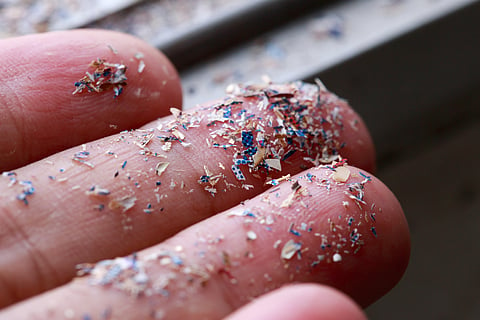WEDNESDAY, May 22, 2024 (HealthDay News) -- In a finding that suggests microplastics may pose a special danger to men, a new study has shown that human testicles contain these tiny bits of plastic at levels triple that seen in animal testicles and human placentas.
“They look like little shards, tiny broken bits from very, very old plastics,” said lead researcher Matthew Campen, a regents’ professor of pharmaceutical sciences at the University of New Mexico in Albuquerque. His team's findings were published recently in the journal Toxicological Sciences.
“This is an eyes wide open situation right now,” Campen told CNN. “We’re just now realizing how much plastic is in our bodies. We need a surge of research around this topic to confirm or deny a role for microplastics in driving infertility, testicular cancer and other cancers.”
The evidence is already accumulating: Once inside the body, these minuscule particles can invade cells and tissues in major organs, experts say, interrupting cellular processes and potentially depositing endocrine-disrupting chemicals such as bisphenols, phthalates, per- and polyfluoroalkyl substances (PFAS) and heavy metals.
Endocrine disruptors can trigger genital and reproductive malformations as well as female infertility and a drop in sperm count, according to the Endocrine Society.
Notably, sperm counts in parts of the world, including the United States, have declined by at least 50% over the past 50 years, the society adds.
In the new study, researchers tested 23 preserved testes from cadavers who were ages 16 to 88 when they died. They then compared the levels of 12 different types of plastics in those testicles with plastics found in 47 dog testes.
“The levels of microplastic shards and types of plastics in human testes were three times greater than those found in dogs, and the dogs are eating off the floor,” Campen said. “So, it really puts in perspective of what we’re putting in our own bodies.”
Researchers expected to find more plastic shards in the testicles of older men in the study, but that wasn’t the case, Campen noted.
“It seems that in peak reproductive years for men, which is from 20 to 45, there are higher levels of plastics, which then begin to decline after the age of 55,” he said. “This suggests the human body can eliminate these plastics.”
The less positive aspect of that finding suggests the higher energy needs of a younger testicle may “pull more plastic into that organ,” Campen added.
“Add to that the fact that the number of plastics we’re exposed to is doubling at a rate of every 10 to 15 years,” he said. “So, what’s going to happen in 15 years when we are exposed to twice the amount or 30 years when we are exposed to four times the amount? That is why action is desperately needed now.”
Researchers also compared the testes results with microplastic levels found in an earlier study on 62 human placentas. In that study, also led by Campen, researchers found microplastics at levels of 6.5 to 790 micrograms per gram of tissue in all the placenta samples studied.
“In testes, the levels of plastic was three times as much as we saw in placentas,” Campen said. “But you have to consider that the placenta only has a life of about eight months.”
The latest study isn’t the first report to find plastics in human reproductive tissue, CNN reported.
A team of Chinese researchers found microplastics in six human testes and 30 semen samples in a June 2023 study.
More information
Harvard Medicine has more on microplastics.
SOURCE: Toxicological Sciences, May 15, 2024; CNN


